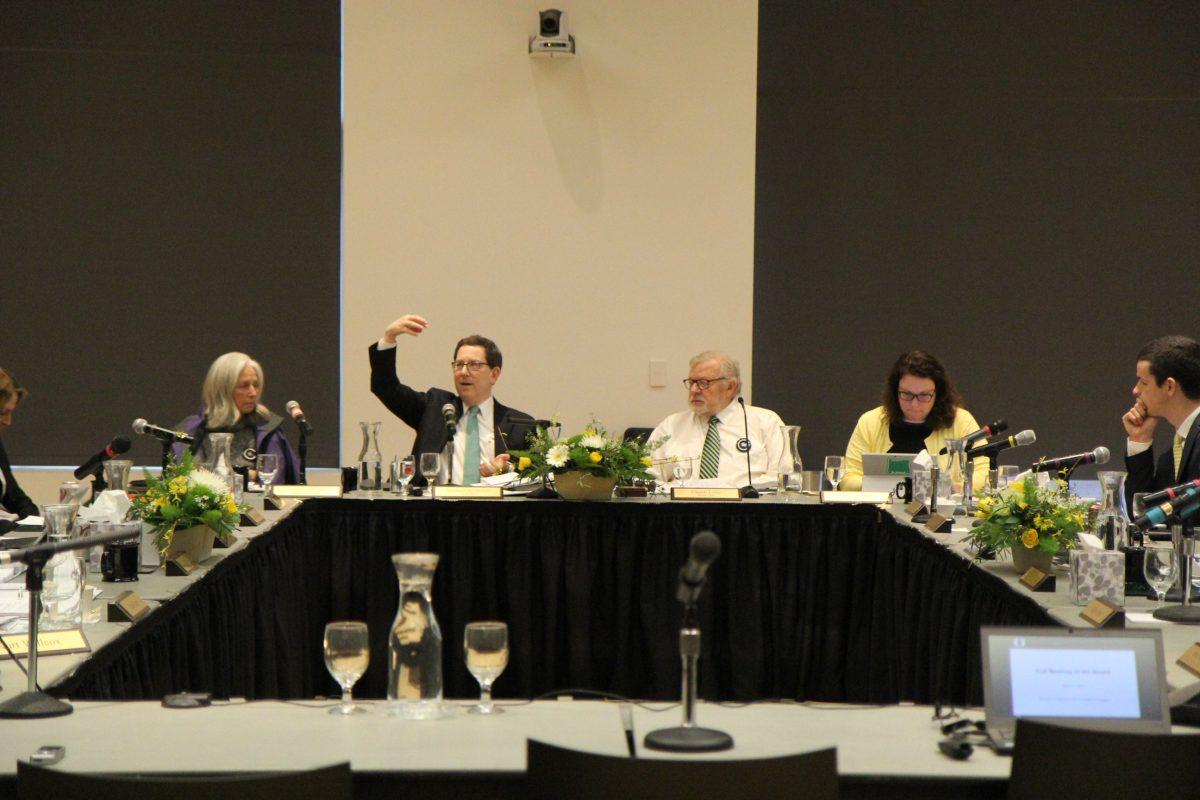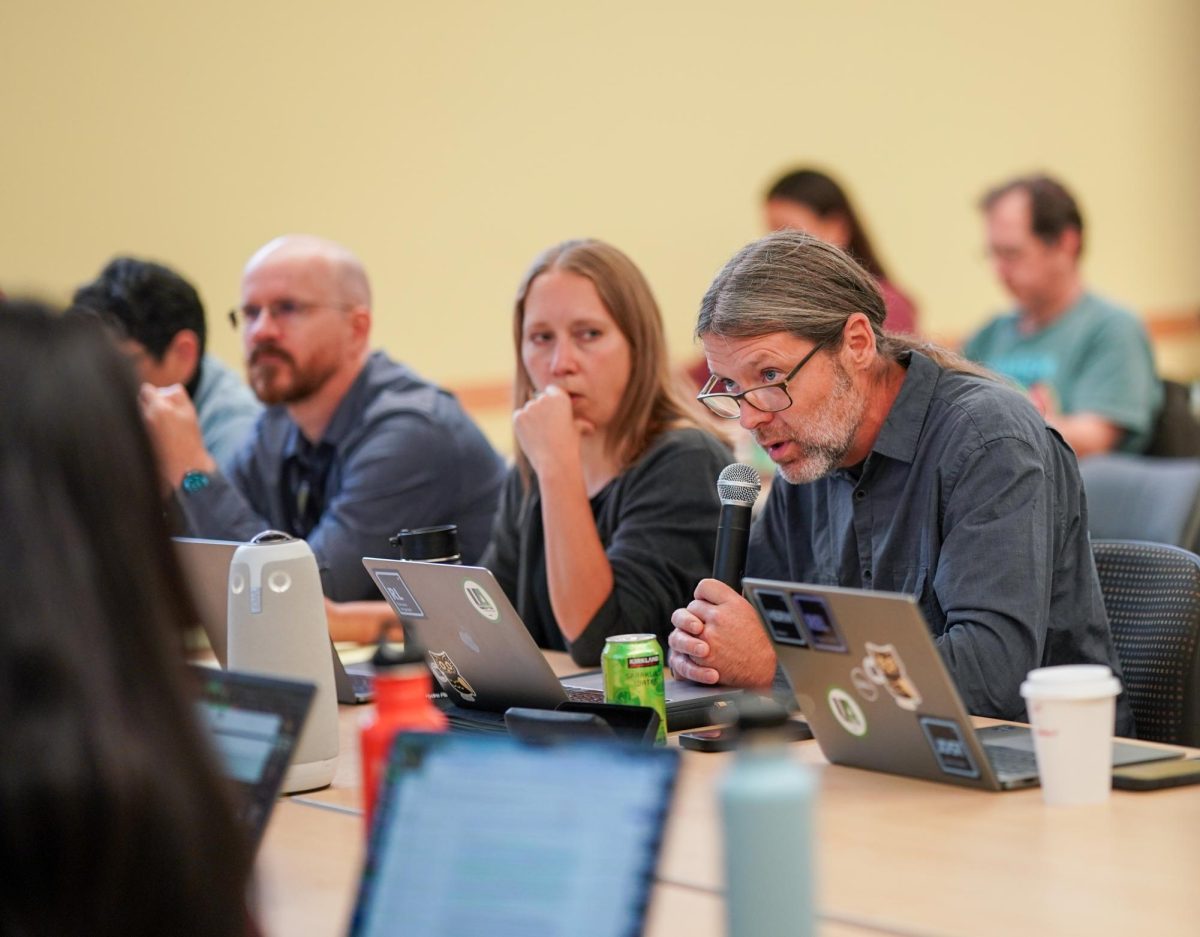Anxious faces filled a conference room in Johnson Hall last Friday morning as members of the Tuition and Fees Advisory Board agreed on a proposal to increase nonresident tuition by 2.97 percent for the next academic year.
From here, the nonresident proposal will go to University of Oregon President Michael Schill for consideration. Schill will host a public forum at 6 p.m. Feb. 11 to gather feedback then make his final recommendations to the board of trustees at their March 4 meeting.
Friday’s proposal comes at the heels of several months of information about rising costs, meetings and public forums. One of the major considerations by the board was public perception: The board settled on 2.97 percent to keep the advertised increase slightly below $1,000 per year so as not to deter potential new students, who are needed to increase the tuition-paying population.
The proposal, which only impacts out-of-state undergraduate students, would increase the cost of a single credit by $22 next academic year. For a full-time student taking 15 credits a term, that shakes out to an increase of $990 a year, an increase slightly larger than last year’s 2.49 percent nonresident increase.
TFAB will consider and propose changes to resident tuition in the spring, after more data is available about how much the state legislature will contribute to the university, which of two revenue proposals the state will approve and how many new students enroll next year.
On Friday, board members discussed at length the impact of the proposal. Many of the students on the board expressed their concerns about rising tuition rates.
“I’m not going to talk about these numbers like they’re not human beings. There’s people that sleep in their cars because they can’t pay rent because they’re paying tuition instead,” said Tan Perkins, ASUO chief of staff. “If you want to go over the 3 percent increase,” Perkins told board members, “our dissent will be fiery.”
In a change from previous years, the university will set tuition for resident students later than nonresidents, so TFAB can consider contributions from the state and university enrollment numbers in setting resident tuition. This led TFAB members to debate the differences in financial situations between residents and nonresidents.
“We need to be concerned about the students who are already here,” ASUO President Maria Gallegos-Chacon told board members. “We don’t have to stick it to out-of-state students, and we don’t have to stick it to in-state students. To say, ‘Which students do we want to put it on most?’ is a huge disservice by this committee.”
At the end of Friday’s discussion, each of the board’s 18 members raised their hands or nodded their heads to indicate that they “could live with” the out-of-state proposal, sending it on to the president and board of trustees.
For resident tuition, there is a longer road ahead. The board of trustees will approve a new rate for residents in May, after enrollment numbers are confirmed. Additionally, depending on how much the legislature contributes, there’s a possibility that voters might need to approve new taxes, which could push a final decision until the summer or fall.
The main factors the university is still rolling the dice on are the current budget shortfall, next year’s enrollment growth and the state’s allocation.
The current shortfall (how much more the university has spent than it has made) is projected to be about $5.6 million, but Chief Financial Officer Jamie Moffitt hinted to TFAB members that it could turn out even higher than that.
The number of new students attending UO could have a big impact on the financial outlook, too. Moffitt estimated that new enrollment could increase university revenues by up to $8 million if enough new students come to campus. Moffitt warned TFAB members, however, that university leaders overestimated last year’s enrollment, which led to the current shortfall.
The biggest factor still up in the air is the state’s appropriation to the university. Because it’s approved by the state legislature and potentially the voters in a general election, that number could be set as early as May or as late as September.
TFAB’s estimates predict that the state’s contribution could be anywhere between $2.7 million less and $8 million more than last year. That’s an unknown of $10.7 million — a huge chunk of the university’s cost drivers.
At Friday’s meeting, student TFAB member Tova Kruss shared her outlook for the coming months.
“Everyone’s going to be very unhappy, and we’ll still have a gap,” Kruss said.






